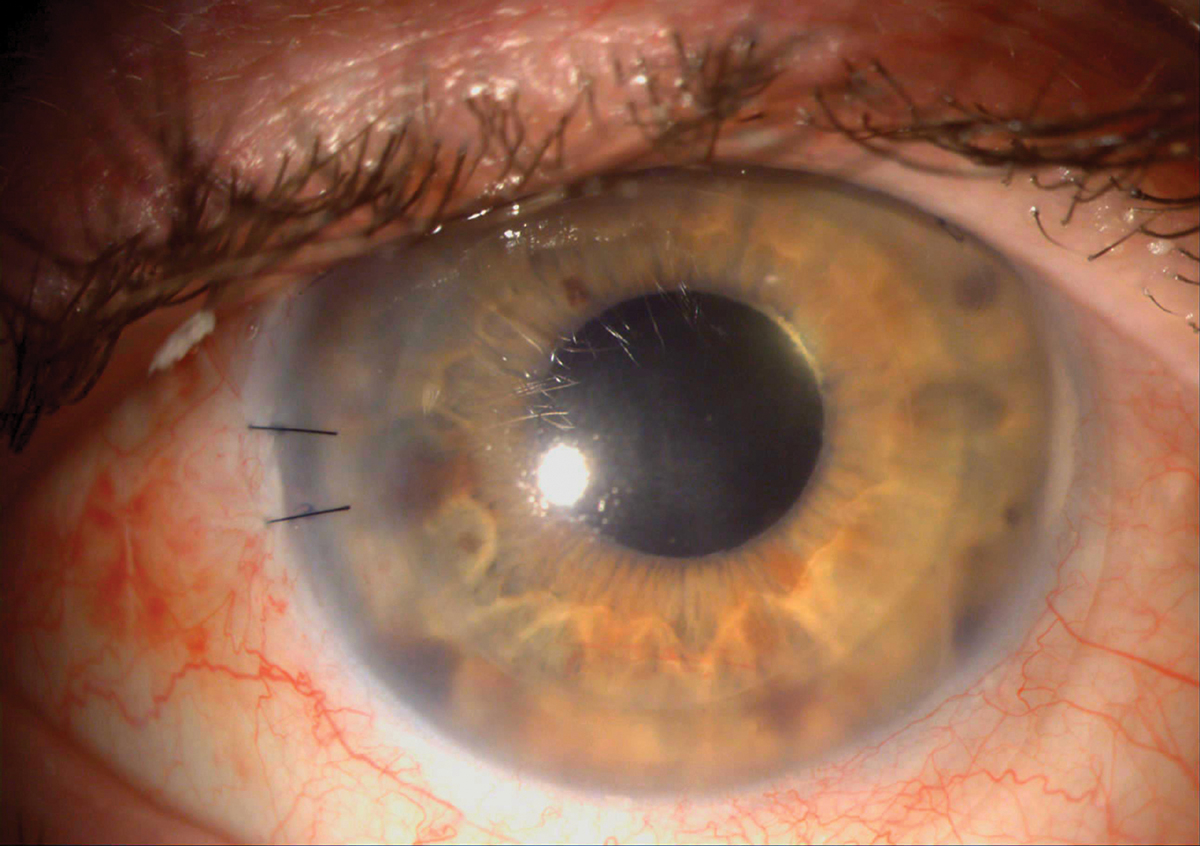 |
|
Keratoplasty may alter certain ocular surface parameters after the procedure. Photo: Suzanne Sherman, OD. Click image to enlarge. |
A small study (n=16) evaluating alterations in the tear film and ocular surface beyond the early postoperative period following penetrating keratoplasty (PK) and deep anterior lamellar keratoplasty (DALK) reported persistent changes not necessarily indicative of a positive outcome.
This cross-sectional, contralateral-eye study compared ocular surface and tear film parameters of eyes with a previous PK or DALK in one eye and no prior surgery in the other. Overall, 87.5% of participants underwent PK and 12.5% underwent DALK using a mechanical dissection. The median time from surgery was 3.4 years. The indication for unilateral keratoplasty was keratoconus in 94% of participants and corneal scarring in 6% secondary to microbial keratitis.
Operated eyes exhibited poorer noninvasive tear film breakup time, lower corneal sensitivity, lower subbasal nerve density and more severe fluorescein staining scores than unoperated fellow eyes. There were no significant differences in tear film lipid layer quality, tear meniscus height, conjunctival hyperemia, lissamine green staining score or meibography grade between operated and fellow eyes. Higher corneal esthesiometry threshold (lower corneal sensitivity) was associated with shorter noninvasive tear film breakup time and increased fluorescein staining score.
“Keratoplasty can induce persistent changes in the ocular surface and tear film, including increased fluorescein staining, decreased tear film breakup time, decreased corneal subbasal nerve plexus density and reduced corneal sensitivity,” the study authors wrote in their paper.
Meyer JJ, Gokul A, Wang MTM, et al. Alterations in the ocular surface and tear film following keratoplasty. Sci Rep. July 14, 2022. [Epub ahead of print]. |


